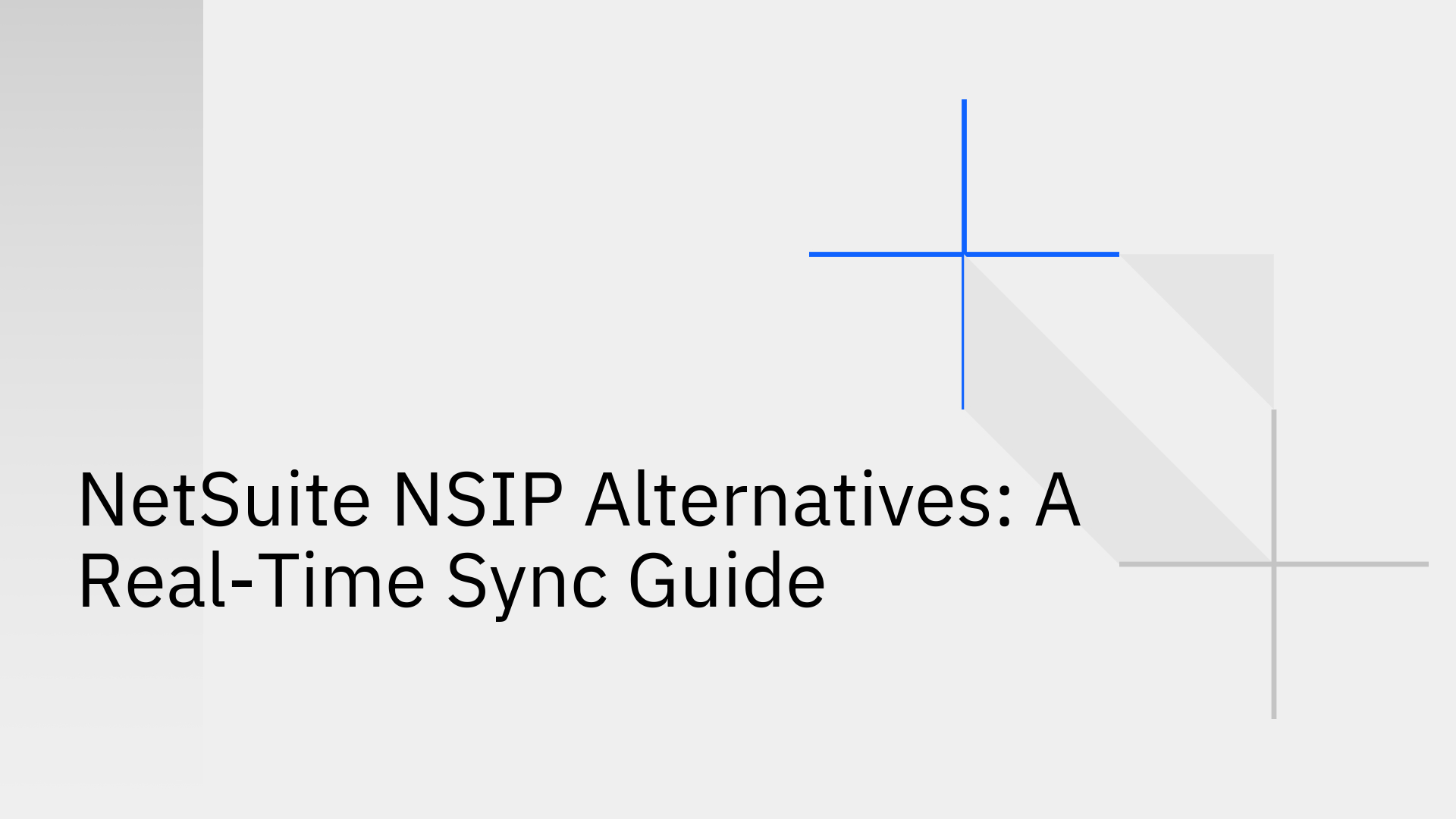
NetSuite is a powerful Enterprise Resource Planning (ERP) platform that acts as the central hub for many businesses, managing everything from finance to inventory.
To get the most out of NetSuite, you need to connect it to your other essential tools, like your CRM or e-commerce store. NetSuite's own solution for this is the NetSuite Integration Platform (NSIP), which offers pre-built adapters and aims for real-time data synchronization [1].
However, as businesses grow, they often find that NSIP has limitations in flexibility, scale, and reliability. This leads them to search for more robust and modern Netsuite NSIP alternatives.
This guide will explore the common challenges of NetSuite integration and introduce the best real-time sync alternatives to help you unlock the full power of your business data.
While NetSuite is a market leader, integrating it with other systems can be surprisingly complex and require specialized knowledge.
Common hurdles include mapping data between different system formats, handling custom fields, and ensuring data remains consistent across platforms [2].
More specific technical challenges can also emerge. For example, NetSuite's APIs can be intricate to work with, and the platform's use of dynamic IP addresses can create persistent headaches for firewall configurations [3].
NSIP is designed to address some of these issues, but it comes with its own set of drawbacks:
When evaluating alternatives, it’s crucial to look for a modern integration platform that addresses NSIP's shortcomings. Here are the essential capabilities to prioritize:
Stacksync is a leading NetSuite NSIP alternative built specifically for real-time, bidirectional data synchronization at scale. It’s designed to solve the exact challenges that businesses face with native tools and general-purpose platforms.
Key features that make Stacksync the superior choice include:
Stacksync provides the reliability and performance needed for demanding NetSuite environments, without the complexity.
General-purpose Integration Platform as a Service (iPaaS) tools like MuleSoft or Workato can also connect to NetSuite. While functional, they are often more complex and built for a wide range of use cases rather than being optimized for the high-performance, two-way sync that NetSuite requires [6]. They can also be more expensive and require specialized developers, similar to building a custom solution.
Building your own integration offers ultimate control, but it comes at a steep price. This path requires high upfront costs, long development cycles (often 3-6+ months), and a dedicated engineering team for ongoing maintenance and bug fixes. For most businesses, the total cost of ownership and resource drain make custom builds an impractical choice compared to a managed platform like Stacksync.
By syncing accounts, opportunities, sales orders, and invoices between Salesforce and NetSuite in real time, you create a single source of truth for the entire customer lifecycle. Sales teams can see payment statuses, and finance teams get immediate visibility into the sales pipeline. This alignment accelerates the quote-to-cash process and eliminates manual data entry. Explore various Salesforce NetSuite Sync Options and Data Integration Platform to find the best fit.
For e-commerce businesses, syncing orders, customers, and inventory levels between a storefront like Shopify and NetSuite is essential. Real-time sync prevents overselling popular items, automates order fulfillment, and provides customers with accurate shipping updates. This operational efficiency directly improves the customer experience and protects your bottom line.
Connecting lead and customer data from HubSpot to NetSuite gives you a full-funnel view of your marketing efforts. Finance teams can finally see which campaigns are generating real revenue, while sales teams can prioritize leads based on their potential value. Our guide to HubSpot NetSuite Integration Solutions 2025 offers a deeper look at this powerful combination.
When you compare the options, Stacksync emerges as the clear winner for businesses that depend on real-time data.
Stacksync is purpose-built for the challenge of real-time, bidirectional sync, unlike generalist tools. It provides all the benefits of a custom solution—performance, reliability, and scale—without the massive overhead of building and maintaining it yourself. This focus makes it one of the best data integration platforms for reliable bi-directional sync.
While NSIP provides a starting point, growing businesses require a more powerful, scalable, and reliable solution to keep their data in sync. A true real-time integration platform doesn't just move data; it unlocks new levels of operational efficiency and business intelligence.
Stacksync stands out as the best NSIP alternative by combining real-time performance, true two-way sync reliability, and enterprise-grade security in a platform that is easy for anyone to use.
By removing the technical complexity of integration, you can finally focus on what matters most: running your business.
Ready to see how real-time, two-way sync can transform your NetSuite data? Book a demo with a Stacksync engineer today.